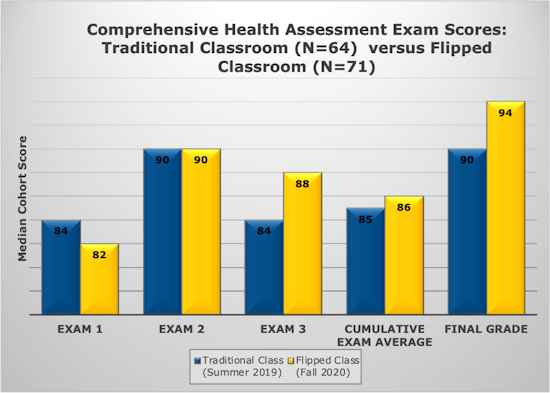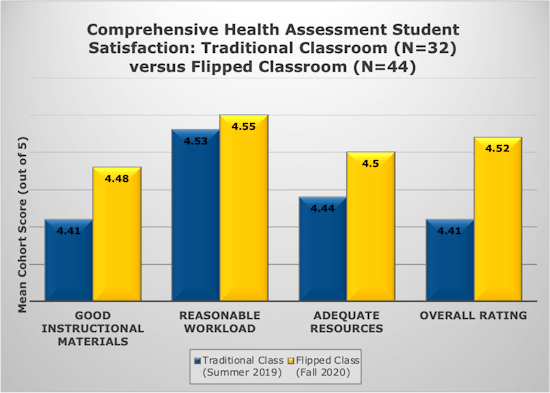iPads in the Accelerated Nursing Program
The iROC Initiative was launched in the Accelerated Program for Non-Nurses in 2019. Students receive an iPad on the first day of orientation and utilize it throughout their classroom, lab, and clinical experiences over the 12 month program.
Getting started with iROC: orientation
One week before classes begin, students receive a swag bag complete with an optimized 128GB iPad, Logitech keyboard case and crayon, and stethoscope. Students attend an iPad training session to get comfortable with navigating and using the apps and books that come pre-loaded on the iPad. In addition to the structured sessions, students are welcome to attend open troubleshooting sessions for additional support.
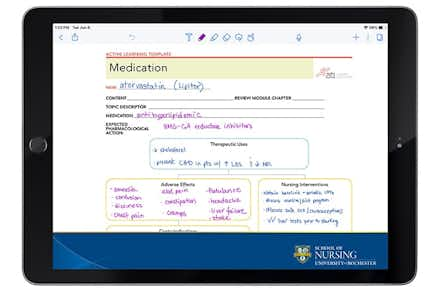
At the conclusion of orientation, a survey is disseminated to elicit specific feedback about the students’ orientation experience. The survey is disseminated via an email distribution list within the survey platform. Questions specific to the iPad orientation capture students’ perceptions around the iPad setup process and comfort level using the digital technologies after iPad orientation. The survey was disseminated to the students who participated in the virtual orientation sessions in the Spring 2021 and Summer 2021 semesters. The response rate for the Spring 2021 cohort was 56 percent, and the response rate for the Summer 2021 cohort was 70 percent. Data from both surveys revealed that the iPad setup instructions were easy to navigate, and students felt very comfortable using the apps reviewed during orientation session(s).
From Spring 2021 to Summer 2021, students reported a significant increase in confidence using the iPad and digital technologies after completing the iPad orientation.
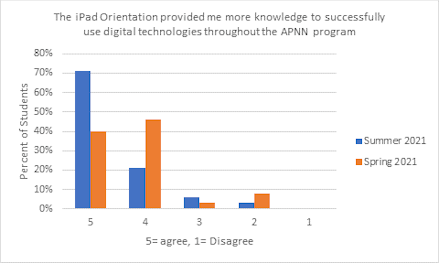
Pre-learning activities
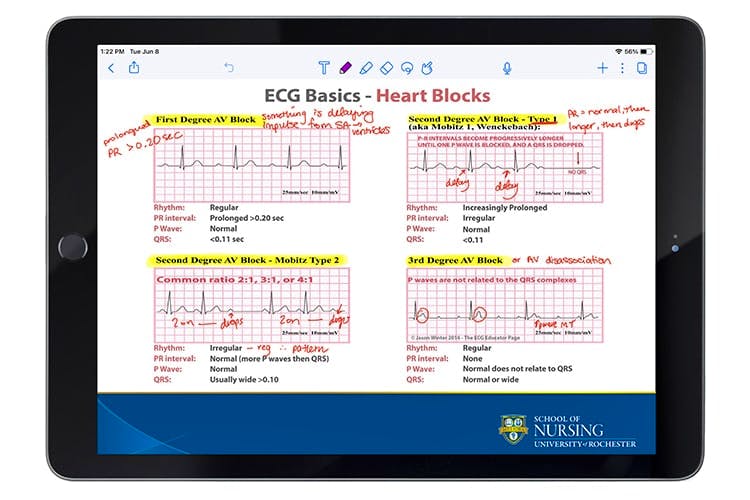
- Podcasts
- Voiceover presentations
- videos
- discussion board activities
- CoursePoint picmonics
- virtual simulations
- pre-learning quizzes
Students may utilize quiz results to identify areas of focus. In addition, they have the ability to create their own quizzes in CoursePoint to test their knowledge or help them study for an exam.
In-class activities
Faculty may also include a short lecture, building on concepts from pre-learning activities. Students then apply concepts learned through collaborative learning activities such as a case study, Padlet (electronic white board), or mind map. These types of activities help students to synthesize information and relate concepts to the clinical setting and patient care.
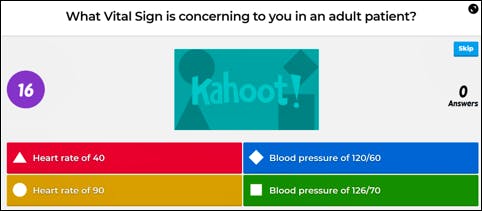
Course outcomes: before & after iROC implementation
Within the last few years, the American Association of Colleges of Nursing (AACN) and Institute of Medicine (IOM) have recommended a change in educational strategies to better prepare the next generation of nurses. The Flipped Classroom (FC) approach is an andragogical theory that actively engages students in learning activities and provides opportunities to apply learned knowledge and skills. More specifically, the FC approach encourages students to complete pre-class learning which introduces basic concepts, so students can focus on the application and building upon learned concepts during the face-to-face class time.
To address AACN’s and IOM’s call for change, an introductory nursing course in the Accelerated Bachelors Program for Non-Nurses, Nursing Health Assessment, decided to “flip the classroom” in 2020. Prior to the change, students were expected to attend a class session where a lecture was delivered; lectures typically covered foundational knowledge, such as, how to complete an assessment and what findings to expect from the assessment. When changed, the course structure was altered so that students would experience the lab session prior to the class session (traditional lecture approach). In addition, students were held accountable to complete pre-learning in order to be prepared for lab; then, during synchronous class sessions (facilitated after labs), students were able to focus on application-based knowledge rather than foundational, “how-to” knowledge.
Multiple pieces of data were collected over the span of two semesters to better understand the effectiveness and preference towards the FC approach. Once analyzed, data suggested that both exam scores and student satisfaction (good instructional materials, reasonable workload, adequate resources, and overall satisfaction) with the course increased with the implemented approach when compared to the traditional approach.
Support from the Clinical Scholar Fellowship Program allowed faculty dedicated time to plan, implement, and evaluate the FC approach in Nursing Health Assessment.
